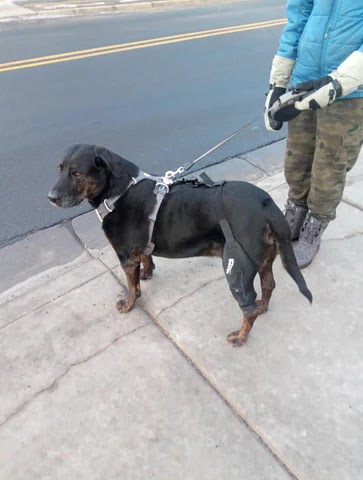Introduction:
Dogs come in various shapes, sizes, and breeds, and each breed has its own unique anatomical characteristics. When it comes to knee injuries or conditions, such as ligament tears or patellar luxation, certain dog breeds may have a higher predisposition due to their specific joint structures. In these cases, using dog knee braces specifically designed for the breed can provide targeted support and better outcomes. In this article, we will explore the importance of dog knee braces for specific breeds and how they cater to their unique anatomical considerations.
Understanding Breed-Specific Anatomical Considerations:
Different dog breeds have variations in their bone structure, joint alignment, and musculature, which can influence the stability and function of the knee joint. Some breeds may be more prone to knee injuries or conditions due to these specific anatomical considerations. Here are a few examples:
Small Breeds with Luxating Patellas:
- Breeds like Chihuahuas, Yorkshire Terriers, and Pomeranians are known to have a higher incidence of patellar luxation.
- These breeds often have shallow grooves in the knee joint, making the patella more prone to dislocation.
- Dog knee braces designed for small breeds with luxating patellas provide support to keep the patella in its proper position and reduce the risk of dislocation.
Large and Giant Breeds with Cruciate Ligament Tears:
- Breeds such as Labrador Retrievers, Golden Retrievers, and German Shepherds are more susceptible to cruciate ligament tears.
- These breeds often have a more upright or straighter conformation of the knee joint, which can increase stress on the ligaments.
- Dog knee braces for large and giant breeds focus on providing stability to the knee joint, relieving pressure on the ligaments, and promoting healing.
Brachycephalic Breeds with Joint Instability:
- Brachycephalic breeds like Bulldogs, Pugs, and French Bulldogs often have joint instability due to their unique body structure.
- These breeds may experience issues like patellar luxation or ligament tears, aggravated by their relatively shorter and stockier legs.
- Dog knee braces designed for brachycephalic breeds address their specific anatomical challenges, providing support and stability to the knee joint.
Benefits of Breed-Specific Dog Knee Braces:
Improved Fit and Comfort:
- Breed-specific dog knee braces are tailored to the unique body shape and size of the breed, ensuring a better fit and comfort.
- These braces take into account variations in leg length, joint angles, and muscle distribution, providing a snug and supportive fit for optimal effectiveness.
Targeted Support and Stability:
- By considering the breed-specific anatomical considerations, these knee braces offer targeted support and stability to the affected joint.
- The braces may have specific design features such as adjustable straps, customized hinges, or padding in key areas to address breed-specific needs.
Enhanced Joint Protection:
- Breed-specific dog knee braces help protect the knee joint from further damage or stress during activities.
- They provide a cushioning effect, absorb shock, and limit excessive movement that could potentially exacerbate the injury or condition.
Facilitates Healing and Rehabilitation:
- Dog knee braces designed for specific breeds can aid in the healing process and rehabilitation by promoting proper alignment, reducing inflammation, and supporting the surrounding muscles and ligaments.
- These braces assist in maintaining the joint in a stable position, allowing for controlled movement during the recovery phase.
Conclusion:
Dog knee braces designed specifically for breed-specific anatomical considerations play a vital role in providing targeted support, stability, and protection to the knee joints of dogs. By understanding the unique characteristics of each breed, these braces can be customized to cater to their specific needs. Whether it is addressing patellar luxation, ligament tears, or joint instability, breed-specific dog knee braces offer an effective and tailored solution for improving mobility, reducing pain, and promoting the overall well-being of dogs. Consultation with a veterinarian or veterinary orthopedic specialist is recommended to determine the most suitable dog knee brace for your breed and ensure proper fitting and usage.





No comments:
Post a Comment